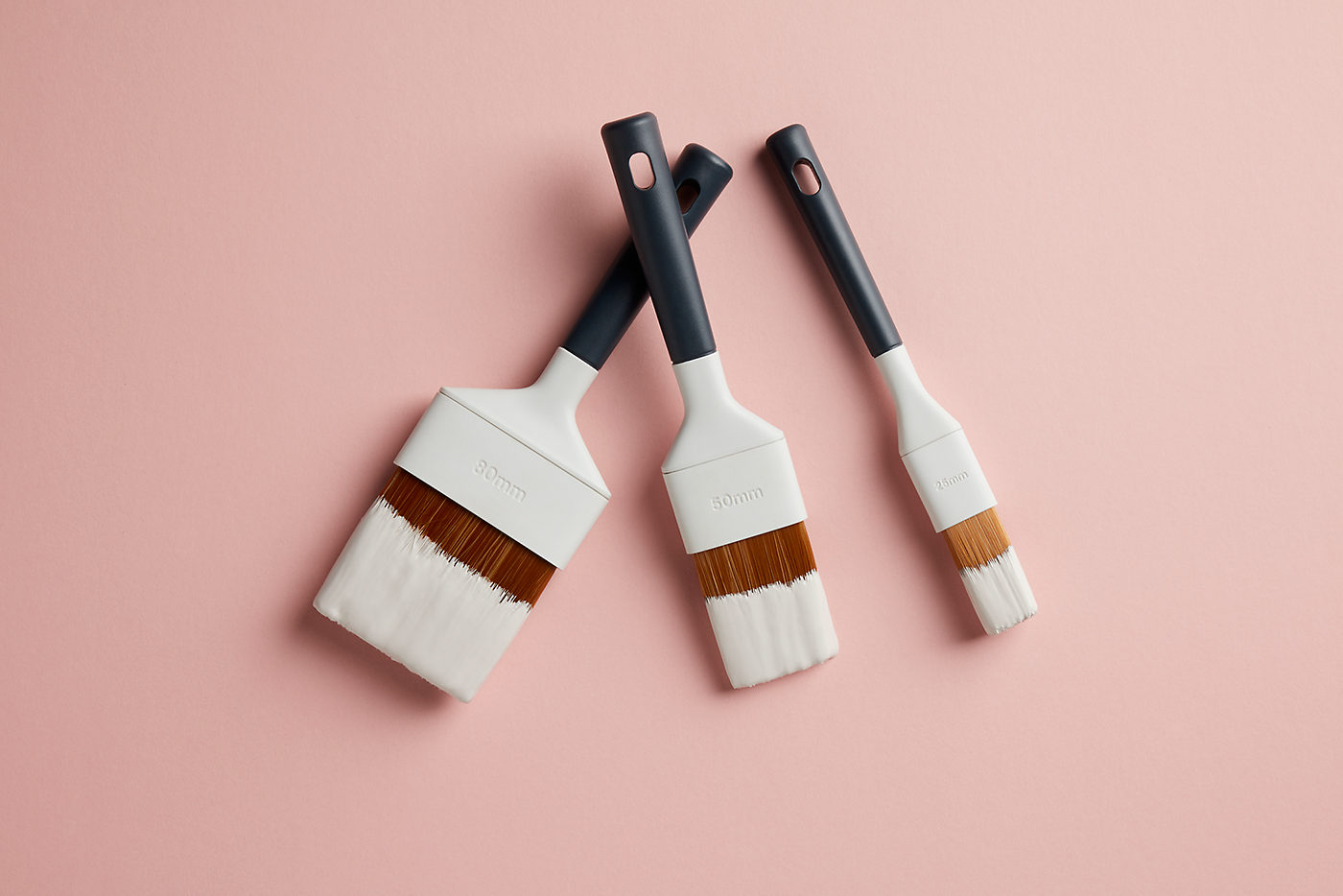How to use painting tools
There have never been so many different options for painting your walls. The latest products, when used properly, can create a perfect finish on any surface being painted. Paint and the tools required, are becoming more specialised and focussed on making the job quicker and easier. Understanding what the right solution is for your painting project will ensure you get to you a quality end result.
Skip to...




How to use paintbrushes
There's a vast selection of paintbrushes to choose from. These range from cheap ones that you use once and then throw away, to professional quality brushes that improve, if you clean and store them properly. You can also buy high-quality synthetic brushes that minimise bristle-loss and have individually-tapered fibres for a finer finish.
Stopping your brushes drying out
You can prevent your brushes or rollers from drying out by wrapping them in cling film. If you make the wrap as airtight as possible, they'll stay soft overnight.




Cleaning and storing your brushes
If you've used your brushes with water-based paints, wash them with water. Work a little soap into the bristles, rinse them clean and leave them to dry. You can store clean, dry brushes, rollers and pads by wrapping them in lint-free cloth, plastic bags, foil or brown paper. If your brushes are covered in oil or solvent-based paint, store them immersed in an appropriate cleaner or solvent. But remember that resting the bristles on the bottom of a jar for any length of time is certain to ruin them, so suspend your brushes or use a specially-designed cleaning tub.
We think you'll love...
How to use a paint roller
Putting on emulsion with a roller is the quickest way to cover a large surface area. But do bear in mind that you may need more coats than when you paint with a brush, because the paint goes on quite thinly. You'll also need to finish the areas that the roller can't reach with a brush.
You can buy roller sleeves in a variety of sizes and textures. Choose a short-pile sleeve for a smooth wall surface or a shaggy sheepskin style for a more textured surface.
If you're using a roller, you should apply solid non-drip emulsion (which comes in a tray). The paint actually liquefies as you use the roller, which lets it absorb the right amount of paint.
Step 1
Pour the emulsion paint into the paint tray reservoir - it should be about a third full. Dip the roller sleeve into the paint and roll it firmly up and down the tray's ribbed incline to spread it evenly. Make sure you don't overload the sleeve; otherwise the paint will splatter everywhere.




Step 2
Move the roller over the wall surface, using random strokes with a light, even pressure. Try not to work too fast or you'll create a fine mist of paint spray. Every time you dip the roller into the paint, move it to the next unpainted area and work your way back to the painted area in overlapping strokes. That way, you'll blend in the wet edges.











